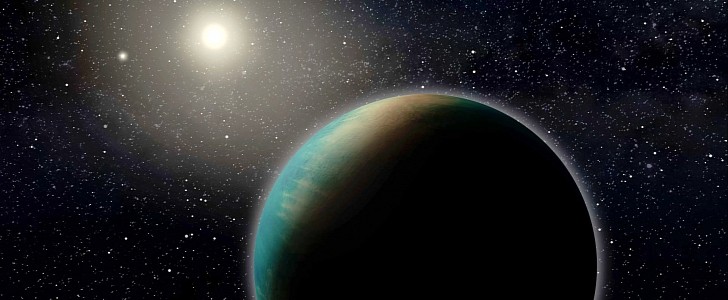A “super-Earth” is lurking just around the corner. Well, if that corner was 100 light years away from Earth. However, even though we lack the technology to get there, it could turn out that we might have a reason to at least try.
The planet's name is TOI-1452 b. A team of international researchers using NASA’s Transiting Exoplanet Survey Satellite, or TESS for short, discovered that it could be an ocean world.
At least that's one of the popular theories. The others are that it could be a bare rock with an iron content less than we have on Earth, or a terrestrial planet (made mostly out of rocks or metals with a hard surface) with a thin atmosphere.
But everyone is routing for the water hypothesis because it is situated in its own version of the "Goldilocks Zone." That means not too hot, not too cold either, but just right.
The big difference between it and our planet, apart from it having two suns, would be that TOI-1452 b appears to be 70% larger, and five times more massive. Its density suggests that one day we could go for a swim on it. Because some of these types of planets have a high enough density that could only be explained by a large proportion of its mass being composed of water. Of course, this extremely recent discovery needs further data.
If, however, this exoplanet turns out to be covered in water, its ocean could run extremely deep. Earth’s surface might be 70% water, but all that H2O barely makes up 1% of our planet’s mass. In a simulation of TOI-1452 b, its water made up as much as 30% of its mass.
A year on TOI-1452 b would be 11 Earth days long. That represents a complete orbit of the exoplanet around its red-dwarf star. It also has another red dwarf star, only in this case it takes the planet an estimated 1,400 years to orbit around it.
The James Webb Space Telescope that’s floating around in space a million miles (1.6 million km) away from Earth could prove very useful in gathering more information. TOI is fairly well-lit and positioned in the Draco constellation, where Webb could observe it from time to time. In fact, the researchers insist on it.
At least that's one of the popular theories. The others are that it could be a bare rock with an iron content less than we have on Earth, or a terrestrial planet (made mostly out of rocks or metals with a hard surface) with a thin atmosphere.
But everyone is routing for the water hypothesis because it is situated in its own version of the "Goldilocks Zone." That means not too hot, not too cold either, but just right.
The big difference between it and our planet, apart from it having two suns, would be that TOI-1452 b appears to be 70% larger, and five times more massive. Its density suggests that one day we could go for a swim on it. Because some of these types of planets have a high enough density that could only be explained by a large proportion of its mass being composed of water. Of course, this extremely recent discovery needs further data.
If, however, this exoplanet turns out to be covered in water, its ocean could run extremely deep. Earth’s surface might be 70% water, but all that H2O barely makes up 1% of our planet’s mass. In a simulation of TOI-1452 b, its water made up as much as 30% of its mass.
A year on TOI-1452 b would be 11 Earth days long. That represents a complete orbit of the exoplanet around its red-dwarf star. It also has another red dwarf star, only in this case it takes the planet an estimated 1,400 years to orbit around it.
The James Webb Space Telescope that’s floating around in space a million miles (1.6 million km) away from Earth could prove very useful in gathering more information. TOI is fairly well-lit and positioned in the Draco constellation, where Webb could observe it from time to time. In fact, the researchers insist on it.






